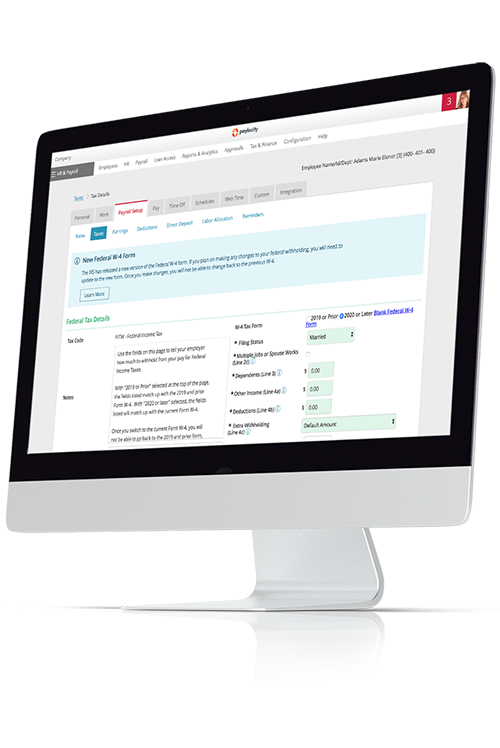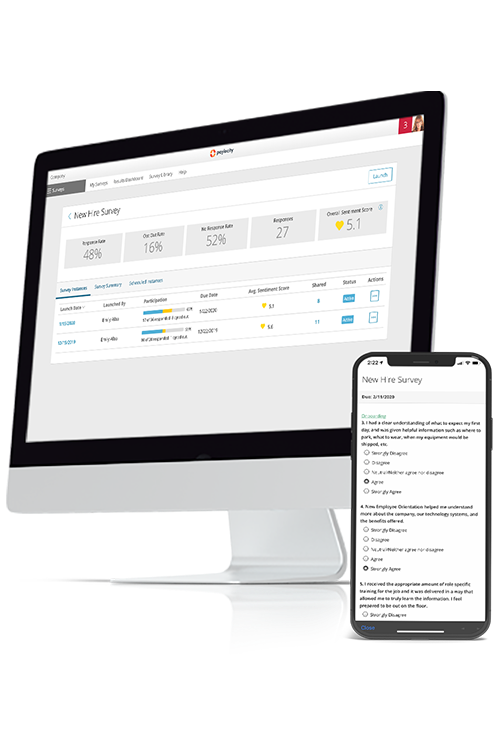
Navigating Tipflation: An Employer’s Guide to Supporting Workers
Tipping in the U.S. has changed significantly over the years.
What used to be a simple way to show appreciation has become an expectation, and many feel stuck. Customers are frustrated, employees are unsure about their income, and businesses are caught in the middle.
As tipping appears in more industries and digital prompts pop up everywhere, we’re all figuring out how to navigate this new normal. "Tipflation" or "tip creep" creates challenges for everyone involved.
Key Takeaways
- Tipflation is the increasing expectation for customers to tip in more situations — often at higher default rates.
- Tipflation is reshaping the service industry, creating customer frustration, financial instability for employees, and operational challenges for businesses.
- Relying less on tipping and more on structured compensation can improve employee retention, reduce customer fatigue, and create a more sustainable wage model.
What is Tipflation?
Tipflation refers to the increasing expectation for customers to tip in more situations and at higher default rates. Traditionally reserved for sit-down restaurants, tipping is now commonly expected for takeout orders, self-service transactions, and even automated kiosks — often at suggested rates of 20% or more.
Digital payment systems, such as Square and Clover, have played a significant role in this shift, prompting consumers to tip in real time, often in the presence of employees. As a result, many customers report feeling pressured into tipping for services that previously did not require gratuities.
The Impact on Customers, Employees, and Businesses
As tipping expectations expand, businesses must navigate the risks of customer dissatisfaction, employee discomfort, and the broader debate over fair compensation.
Consumers Express Growing Frustration
Digital tipping, initially designed for convenience, has become a financial and social pressure point for consumers. With many more expectations around tipping at higher rates, customers report feeling fatigued, uncomfortable, and frustrated with businesses that seem to offload labor costs onto customers.
In a survey of over 2,000 U.S. adults, Paylocity found that most aren’t happy about where tipping is headed:
- Mandatory tipping: 78% say tipping no longer feels optional.
- Tipping fatigue: 65% are annoyed by constant requests.
- Industry limits: 74% believe tipping should stay within traditional service roles.
This growing dissatisfaction suggests that businesses relying heavily on tipping may risk alienating customers, potentially leading them to seek alternatives with more predictable pricing models.
Employees Face Wage Uncertainty
For many workers, tipping has transitioned from a bonus to an essential part of their income, leading to financial instability. Our study revealed concerns such as:
- Wage fairness: 58% reject lower base pay tied to tip potential.
- Awkward interactions: 64% feel uneasy asking customers for tips.
- Industry boundaries: 71% believe tipping should stay within traditional service roles.
- Policy clarity: 76% want more transparent tipping guidelines.
These statistics highlight a growing demand for stable wages and clearer guidelines regarding tipping expectations by those asking customers for tips.
Businesses Struggle to Find Balance
The rapid expansion of tipping practices presents several challenges for employers, including:
- Customer backlash: Frustrated consumers may take their business elsewhere.
- Employee turnover: Uncertain earnings and discomfort with tipping expectations can drive workers toward more predictable employment opportunities.
- Financial instability: Over-reliance on tipping can result in inconsistent earnings for employees, impacting overall job satisfaction and retention rates.
How Companies Can Support Tipped Employees
Supporting tipped employees requires a thoughtful approach to wages, policies, and overall compensation.
By evaluating pay structures, clarifying tipping expectations, and exploring alternative incentives, businesses can better retain employees and create a rewarding work environment that benefits customers, too.
1. Evaluate Employee Wages
With 61% of Americans opposing lower wages for tipped workers, businesses should consider:
- Setting fair base wages: Reducing dependence on customer gratuities ensures financial stability for employees.
- Benchmarking against industry standards: Offering competitive pay can help attract and retain talent.
- Gathering employee feedback: Surveys and discussions with staff can provide insight into wage satisfaction.
2. Review Tipping Policies
Businesses can ease customer frustration and improve employee satisfaction by implementing clear tipping policies:
- Transparency: 76% of workers want clear guidelines on how tips are distributed.
- Customer communication: 78% of consumers prefer upfront information on tipping expectations.
- Reducing tipping prompts: Limiting excessive tipping requests can help mitigate tip fatigue.
Once you understand your business’s tipping practices, design a system that balances fair support for workers with a seamless customer experience.
3. Explore Alternative Compensation Models
Reduce reliance on tipping by incorporating alternative pay structures:
- Guaranteed base pay plus tips: Provides employees with financial security while maintaining gratuity opportunities.
- Profit-sharing programs: Aligning employee earnings with business performance fosters a sense of ownership.
- Performance-based bonuses: Incentives beyond tipping can encourage strong job performance.
- Employer-sponsored retirement: Offers 401(k) matching, emergency savings programs, or financial planning to help employees build long-term security.
- On-demand pay: Allows employees to access their earned wages before payday, easing financial stress and cash flow issues.
Take Care of Your Tipped Employees — For Good
Businesses that over-rely on tipping risk frustrating customers and employees.
The good news is that leaders can take steps to ensure that wages and their tipping expectations are reasonable and aligned with both employee needs and customer expectations.
Instead of relying on outdated processes to support employees, equip your business with smarter payroll tools to put you back in control.
With Paylocity, you can:
- Understand: With Paylocity’s Employee Voice tool, you can quickly and comprehensively understand employee sentiment about just about anything — including tipping, wages, and more.
- Automate: Tipped wages come with tax complexities, from reporting requirements to employer obligations. Paylocity’s payroll platform automates wage calculations, tax withholdings, and compliance tracking, so you never have to second-guess if you’re getting it right.
- Take control: Juggling tip tracking, scheduling, and payroll? Paylocity seamlessly integrates with POS systems to centralize tip reporting, simplify scheduling, and ensure hourly workers are paid accurately — without the manual headaches.
Want to learn more? Request a demo of Paylocity today!




